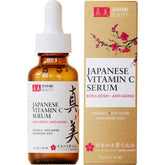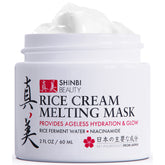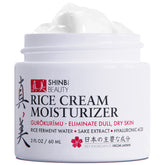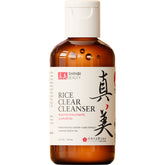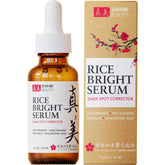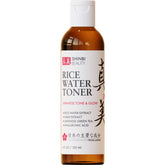Japanese Beauty Standards: A Fusion of Nature, Culture, and Science
Beauty isn't just skin deep.
Especially when you dive deep into the world of Japanese beauty standards.
Japan has always been renowned for its rich traditions and groundbreaking innovations.
And just as samurai swords blend centuries-old craftsmanship with metallurgical genius, Japanese beauty reflects a mesmerizing mix of ancient traditions, cultural aesthetics, and scientific advancements.
Curious to uncover what really defines beauty in the land of the rising sun?
Let’s demystify these standards together, and maybe, just maybe, you'll discover a few secrets to integrate into your own beauty regimen.
Nature and Its Sublime Influence
When you step into the world of Japanese beauty standards, you’re really stepping into a centuries-old dance with nature.
Why?
Well, in Japan, beauty isn’t just what you slap on your face in the morning. It’s an ideology, deeply rooted in the nation's intrinsic connection to the environment.
Let’s dig a bit deeper…
Cherry Blossom Radiance
Ah, the cherry blossoms, or as the locals fondly call them, "sakura".
Now, these aren't just pretty flowers that make for great Instagram posts during "hanami" (flower viewing) season. Sakura blooms are deeply symbolic in Japanese culture, often seen as metaphors for the ephemeral nature of life.
They bloom brilliantly, but only for a short while, reminding us of the transient nature of our existence.
But how does this link to beauty, you ask?
The delicate, soft, rosy hue of the sakura is idolized in Japanese beauty.
Think about it: a color that symbolizes the temporary, fleeting nature of life and beauty itself.
In Japan, the aim is to embrace this transient beauty, leading to a preference for natural, delicate skin tones over a cakey, heavy makeup look. This mindset promotes skincare that brings out the skin's natural glow rather than masking it.
Imagine you’re taking a stroll beneath sakura trees, with petals softly brushing your skin. Wouldn’t you want your skin to match that soft, natural, and radiant vibe?
That’s the cherry blossom influence for you!
The Dewy Morning and ‘Tsuya-skin’ Magic
Picture this: You wake up early, step out into your garden or balcony, and see those tiny droplets of dew delicately poised on leaves, reflecting the soft morning light.
This exact visual is what Japanese beauty aims to emulate with 'tsuya-skin'.
But let’s break it down.
'Tsuya' in Japanese translates to luster or shine. So, when someone talks about ‘tsuya-skin’, they’re referring to skin that has a luminous, fresh glow, reminiscent of those morning dew droplets. It’s not about an oily shine, but a hydrated, youthful sheen.
Now, achieving 'tsuya-skin' isn’t just about applying tons of highlighter. It's a methodical process.
First and foremost, hydration is key. The Japanese believe in drinking ample amounts of water. Remember, our skin is like a sponge; when well-hydrated, it appears plump and radiant.
But internal hydration isn’t where the story ends. External hydration, through meticulously crafted skincare routines, also plays a pivotal role.
Think hydrating toners, essence, serums, and moisturizers, all designed to lock in moisture. The ingredients used in these products often lean towards naturally hydrating agents – from hyaluronic acid (a molecule that can hold 1000 times its weight in water) to plant extracts like the revered green tea.
The Cultural Symphony
Unraveling the intricacies of Japanese beauty standards isn't just about skincare and nature; it’s also an invitation into the philosophical and cultural underpinnings of Japan.
Understanding these concepts gives depth to the "why" behind the beauty practices.
Let’s dive into two essential philosophies that guide not just beauty standards, but also everyday life in Japan.
Wabi-Sabi Wonders
To the uninitiated, "Wabi-Sabi" might sound like a sushi variant, but in reality, it's a profound aesthetic concept that has been shaping Japanese culture for centuries.
Rooted in Zen Buddhism, Wabi-Sabi is all about appreciating the beauty in imperfection and transience.
What does this mean for beauty standards?
Well, in a world that’s chasing unrealistic standards of perfection (thanks, Photoshop!), the Japanese emphasis on Wabi-Sabi offers a refreshing perspective.
Instead of striving for that picture-perfect skin or symmetrical features, Wabi-Sabi celebrates the cracks, the scars, the uneven skin tone, and those unique beauty marks and freckles. They aren’t blemishes; they're testament to one’s life journey and experiences.
From a scientific perspective, no two people's skin is the same.
Environmental factors, genetics, and even personal experiences lead to differences, be it a birthmark, a scar, or a wrinkle.
Wabi-Sabi acknowledges this science of individuality. It understands that these "imperfections" narrate personal stories, and in these tales lies authentic beauty. So, that beauty mark or uneven eyelid isn't a flaw; it's a mark of individuality, a symbol of your unique journey.
Mono No Aware and the Pursuit of Elegance
On the flip side of Wabi-Sabi's celebration of imperfections, "Mono No Aware" navigates the realm of transitory beauty.
Often translated as "the beauty of fleeting moments", this concept throws light on the transient nature of all things.
Remember those cherry blossoms we talked about? They're a perfect embodiment of Mono No Aware. Their beauty is not just in their bloom, but in the knowledge that they’ll soon fade away.
When it comes to beauty, Mono No Aware emphasizes grace, subtlety, and a kind of ephemeral elegance. It’s not about dramatic transformations or bold statements; it’s about understated charm that captures the essence of fleeting moments.
How does this translate to everyday beauty choices?
Think of it this way: instead of going for that bold, attention-grabbing red lipstick (which, don’t get me wrong, has its moments!), the Japanese aesthetic might lean more towards a muted coral or soft pink. It adds just a hint of color, a whisper of elegance, without overpowering one’s natural beauty.
It's not about making a loud statement but creating a harmonious balance that complements one’s features.
From a scientific lens, softer shades tend to blend seamlessly with a wider range of skin tones, enhancing natural pigmentation without overwhelming the face's balance.
By choosing subtlety, you allow each feature its moment in the spotlight without any one element taking center stage.
Science, Not Sorcery
Navigating through the alleys of Japan’s beauty scene, one might be tempted to think there’s some magic elixir at play.
The radiant skin, the youthful glows – it all seems a tad...supernatural.
But here's the plot twist: it's not sorcery. It's grounded, tried-and-true science.
Let’s peel back the layers and dive into the scientific foundation of some cornerstone Japanese beauty practices.
Rice is Nice (and Not Just on Your Plate)
Rice, that fluffy side dish accompanying your sushi rolls, is an unsung hero in the realm of Japanese beauty.
But how did this grain transition from bowls to beauty regimens?
The scientific lowdown: Rice, specifically rice bran, is packed with gamma oryzanol – a substance known for its antioxidant properties.
Antioxidants, for those diving into the science pool, are compounds that combat free radicals (the naughty molecules that can cause premature aging). When rice bran oil or extracts are incorporated into skincare products, they bring along these antioxidants, promoting skin that resists aging. The same holds true for rice water, which is why it’s as ubiquitous in J-Beauty as those cherry blossoms during hanami.
But wait, there’s more! Rice also contains ferulic acid, which acts as a UV protector, and allantoin, known for its moisturizing and inflammation-reducing properties. So, in essence, rice-based skincare isn't just a tradition; it's a treasure trove of benefits grounded in science.
Not sure where to start with incorporating rice into your skincare? Our Rice Cream Moisturizer is generously packed with rice ferment - with Japanese sake extract and hyaluronic acid to boot!
Seaweed Secrets: More than Mermaid Food
Japan, with its vast coastal geography, has an intimate relationship with the sea.
Beyond sushi and sashimi, the sea offers another gem: seaweed. But what's the big deal about these underwater plants?
Enter science: Seaweeds like Wakame and Kombu aren’t just delicious; they're dense with essential nutrients. They're loaded with vitamins (A, C, E, and K to name a few) and minerals like iodine, selenium, and zinc. These nutrients collectively enhance skin hydration, elasticity, and overall health.
Moreover, marine collagen derived from seaweed has a smaller molecular size compared to animal collagen.
Why is this important? It means it's more easily absorbed by our skin, giving it that desired plump and youthful appearance. So, the next time you spot seaweed in your skincare's ingredient list, know that it’s a nod to Japan’s coastal roots and its scientific prowess in skin nourishment.
Fermentation Finesse: Beyond Food and Drink
Mention fermentation, and your mind might jump to sushi rice or the delightful warmth of sake.
But there's another domain where fermentation shines: skincare. The Japanese beauty industry has been fermenting ingredients long before it became a global trend.
The science of it is quite fascinating. Fermentation breaks down molecules into smaller sizes, making them more bioavailable. When applied to skincare, this means the skin can absorb these nutrients more efficiently.
Plus, fermentation produces additional amino acids, organic acids, and antioxidants – a dream team for skin health.
Take, for example, the fermented yeast extract, galactomyces. This little powerhouse, post-fermentation, is brimming with vitamins and minerals, promoting clearer, more radiant skin.
So, it's not just about the ingredient; it's about unlocking and enhancing its potential through the genius of fermentation.
Techniques over Products
Ever notice how the beauty realm often bombards us with the "next big product" promise?
While a top-notch serum or cream has its place, sometimes it’s not about what’s in the bottle, but rather how you use it.
Japan, with its centuries-old beauty traditions, understands this deeply. Here, technique takes center stage, with a belief that method can elevate even the most basic product into something transformative.
Let's unravel these game-changing rituals, shall we?
Double Cleansing Decoded: Twice as Nice
Before you gasp in disbelief, let’s clear the air: double cleansing doesn’t mean stripping your skin. It’s a dance of precision and balance.
Think of your skin at the end of the day – it’s wearing makeup, the day's sebum, sweat, and the traces of that urban jungle (read: pollution).
One cleanse? Unlikely to clear that mix.
The first step, the oil-based cleanse, is your makeup melter.
Why oil?
Science time! Oil dissolves oil. It's a basic principle of chemistry. That waterproof mascara, the stubborn matte lipstick, and even excess sebum – an oil-based cleanser can lift and dissolve them gently.
The second act, the water-based cleanse, deals with the water-soluble grime. Think sweat, dust, and general pollutants. Together, this two-step waltz ensures a pristine canvas, ready for the rest of your skincare ritual.
Facial Massage Magic: Not Just a Spa Day Luxury
Here's where many get it twisted – facial massages aren't just for those spa-day indulgences. Incorporating them into your daily routine can be a game-changer.
But why, you ask?
Enter the science of blood flow. Proper circulation ensures that oxygen and nutrients reach the skin cells efficiently. This leads to healthier skin that boasts a natural, youthful radiance. Facial massages, be it with the traditional Kansa wand or your trusty fingertips, stimulate this circulation.
Furthermore, the gentle pressure and manipulation help with lymphatic drainage.
Lymphatic what-now? Our bodies have a lymphatic system, which carries away toxins. Massaging facilitates this process, reducing puffiness and giving your face a more contoured appearance. Think of it as a mini workout for your face, minus the sweat!
Layering Love: It’s a Marathon, Not a Sprint
The West often advocates the heavy-duty, all-in-one miracle cream. Meanwhile, Japanese beauty zooms in on targeted treatments, allowing each to shine.
But there's more than tradition at play here. It's a calculated, science-backed strategy.
Our skin is a barrier, and its job is to keep things out (yes, even that expensive serum). Layering, however, maximizes absorption potential.
When you apply a lightweight toner, it hydrates and preps the skin, making it more receptive to the next product, say a serum. The serum then, in turn, paves the way for a moisturizer or oil. Each step makes the skin more permeable, ensuring the subsequent product penetrates deeper.
But patience, young grasshopper! Rushing through the layers defeats the purpose. Giving each product time to absorb ensures you reap maximum benefits.
In essence, Japanese beauty reminds us that sometimes it’s the method, not the material, that makes all the difference. By mastering these techniques, you're not just applying products; you’re practicing an art form, where each stroke, dab, and layer is a step towards skin nirvana.
Bringing It All Together
Now, let’s get real. Why does all this matter to you?
Understanding Japanese beauty standards isn't about feeling pressured to conform. Nope! It’s about embracing diversity, exploring new techniques, and maybe borrowing a few tricks to enhance your unique beauty regimen.
After all, in a world of evolving beauty standards, there's something profoundly empowering in knowing you can shape and define your own beauty narrative.
Looking to embrace that sakura-like radiance? Maybe start with hydration and a simplified makeup routine. Drawn to the subtlety of 'mono no aware'? A muted lip shade might just be the twist your beauty game needs.
So, as you navigate the vast ocean of beauty, remember: It's not about emulating an ideal, but about celebrating your unique blend of nature, culture, and science.
Because, darling, in the world of beauty, you're both the artist and the masterpiece.
